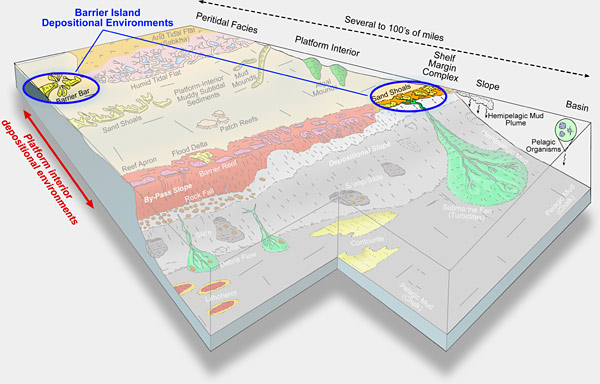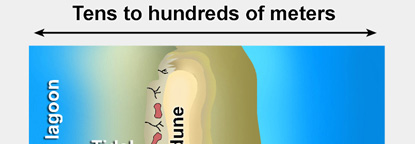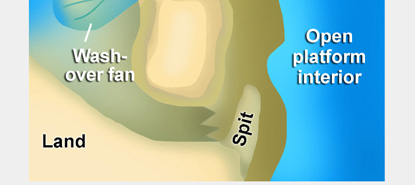|
The system can be
divided into several environments:
(1) Beach: This includes sediments from
the shore face, fore shore, and back beach.
(2) Eolian Dune: Well-developed eolian
sand dunes commonly develop landward of the back beach.
(3)
Tidal Channel Facies: Tidal channels commonly dissect
barrier islands. Channels can contain mud-free to muddy
sand depending on their depth, tidal current energy, and
density of sea-grass growth.
(4)
Sand Spit Facies: Sand spits can accrete laterally
into tidal channels on barrier islands.
(5)
Flood-Delta Facies: As tides and storms force water
through tidal channels, deltas form on the flood end of
the channel. These deposits range from sandy facies with
isolated corals and red algae to a muddy facies with sea
grass.
(6) Ebb-Delta Facies: As tides and storm
waters drain back out through tidal channels, deltas form
on the ebb end of the channel and produce sandy facies with
corals and red algae.
|











